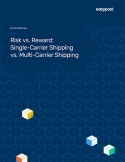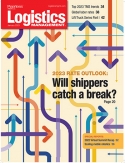Badcock Home Furniture &more: Out with paper, in with Cloud TMS
When Rick Meyer joined the team at Badcock Home Furniture &more as director of purchasing six years ago, the company relied on paper-based calendars and a dispatcher to orchestrate its transportation processes.

Transportation in the News
U.S. rail carload and intermodal volumes are mixed, for week ending January 14, reports AAR Driving the Risk Out of Line Haul Fleet Management with AIoT Technologies 论坛流动性heralds $400M joint venture with CBRE IM and Series A funding round FTR Trucking Conditions Index improves but remains firmly in negative territory 2023 Rate Outlook Webcast: Will shippers catch a break? More Transportation NewsTransportation Resource
Driving the Risk Out of Line Haul Fleet Management with AIoT Technologies Explore how Hikvision’s Line Haul Management Solution boosts productivity, improves safety and minimizes transportation risks.
Explore how Hikvision’s Line Haul Management Solution boosts productivity, improves safety and minimizes transportation risks.All Resources
WhenRick Meyerjoined the team atBadcock Home Furniture &moreas director of purchasing six years ago, the company relied on paper-based calendars and a dispatcher to orchestrate its transportation processes.
On a daily basis, the dispatcher would record pickups on one calendar and trailer locations on another. “The system was 100% manual, using e-mail and phone calls,” says Meyer, now the director of supply chain for the 112-year-old furniture manufacturer.
Meyer says that the system was similar to the one he used himself as a dispatcher in the 1970s. “We knew we needed to do something about it,” says Meyer, “and that our systems weren’t necessarily up to what we needed or wanted.”
在与几家业内资深人士和说话co-workers who were well versed in logistics, Meyer was introduced to Mark Nix, CEO of Cloud Logistics, at a CSCMP conference.
“Cloud Logistics was fairly new at the time,” says Meyer, who liked the idea of working with a new, Cloud-based TMS vendor that was still shaping its offering. “We had the chance to do a lot of customizations and create a Cloud-based TMS that we didn’t have to change very much. That made it pretty easy to integrate into the rest of our processes.”
With more than 315 stores in eight states (75 of which are corporate and 240 are dealer owned), Badcock also wanted to employ automation in a way that would allow one person to manage its 6,000+ annual domestic shipments.
“When you have one person managing all of that, mistakes are inevitable,” says Meyer. “Maybe he didn’t choose the right carrier or the most economical route, for example. Those small issues can create a lot of inefficiencies in the transportation process over time.”
In place for more than five years, Cloud Logistics’ TMS manages Badcock’s routing, bidding, pricing, carrier selection process and other functions that help the company manage its “largely stationary” transportation network. “Pickups are not generally bouncing all over the country because we’re picking up from the same furniture from the same factory in Starkville, Miss., every week,” says Meyer. “Once we establish those lanes and know what our costs are, the TMS assigns the carrier. It makes for a relatively hands-off process.”
In return for its investment, Badcock has been able to reduce its lead times, minimize inventory “safety stock,” and reduce its overall transportation costs by about $500,000 over the last 12 months. The company has also gained 24/7 visibility over its transportation network—something that paper-based calendars simply can’t compete with.
Meyer says that the ultimate benefits of having a Cloud-based TMS are better transportation decisions and improved inventory management across multiple locations. “Not having product where we need it, when we need it is extremely irritating,” says Meyer. “Today, a factory tells the TMS when the loads are ready, and then the TMS tells the carrier when the loads are ready. The carrier picks it up, and everything runs smoothly.”

About the Author
 Bridget McCrea, EditorBridget McCrea is a Contributing Editor for Logistics Management based in Clearwater, Fla. She has covered the transportation and supply chain space since 1996 and has covered all aspects of the industry for Logistics Management and Supply Chain Management Review. She can be reached at[email protected], or on Twitter@BridgetMcCrea
Bridget McCrea, EditorBridget McCrea is a Contributing Editor for Logistics Management based in Clearwater, Fla. She has covered the transportation and supply chain space since 1996 and has covered all aspects of the industry for Logistics Management and Supply Chain Management Review. She can be reached at[email protected], or on Twitter@BridgetMcCrea

Subscribe to Logistics Management Magazine!
Subscribe today. It's FREE!Get timely insider information that you can use to better manage your entire logistics operation.
Start your FREE subscription today!
 Single-Carrier vs. Multi-Carrier Shipping Stategies
Download the white paper to learn about the benefits of multi-carrier shipping with EasyPost.
Download Today!
Single-Carrier vs. Multi-Carrier Shipping Stategies
Download the white paper to learn about the benefits of multi-carrier shipping with EasyPost.
Download Today!
 Our annual gathering of freight transportation industry analysts reveals some common themes, largely around the notion that rates are not likely to increase much—if at all—in some modes and will continue declining in others. Does this mean things are stabilizing?
Our annual gathering of freight transportation industry analysts reveals some common themes, largely around the notion that rates are not likely to increase much—if at all—in some modes and will continue declining in others. Does this mean things are stabilizing?LM Viewpoint on the 2023 Rate Outlook: Will shippers catch a break? Global Labor Rates: China is no longer a low-cost country View More From this Issue
 2023 Rate Outlook Webcast: Will shippers catch a break?
In this annual webcast, group editorial director Michael Levans hosts our panel of logistics and freight transportation analysts who share their insights on rate patterns in all the major transport modes in an effort to help shippers prepare their freight transportation budget for the coming year.
Register Today!
2023 Rate Outlook Webcast: Will shippers catch a break?
In this annual webcast, group editorial director Michael Levans hosts our panel of logistics and freight transportation analysts who share their insights on rate patterns in all the major transport modes in an effort to help shippers prepare their freight transportation budget for the coming year.
Register Today!








